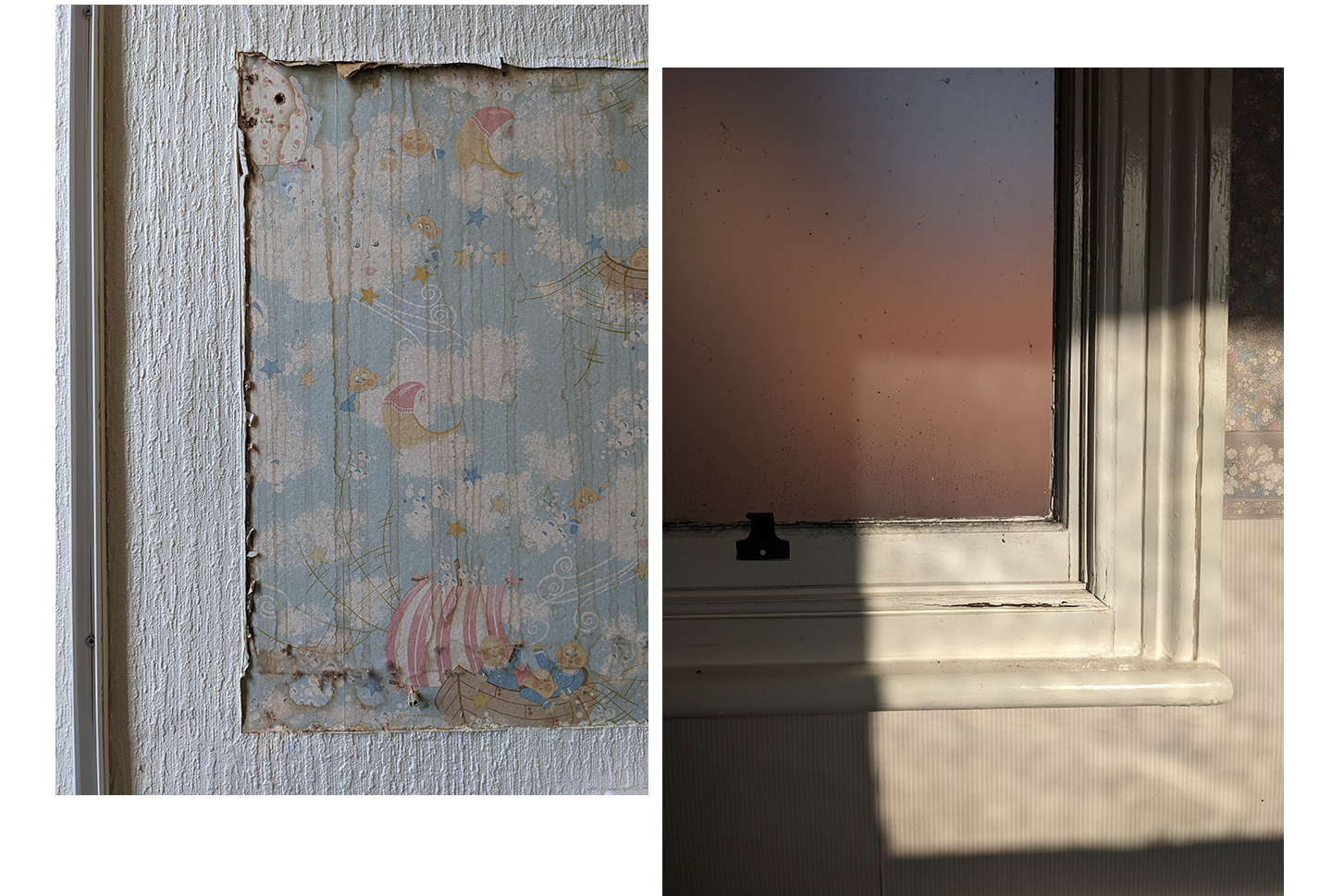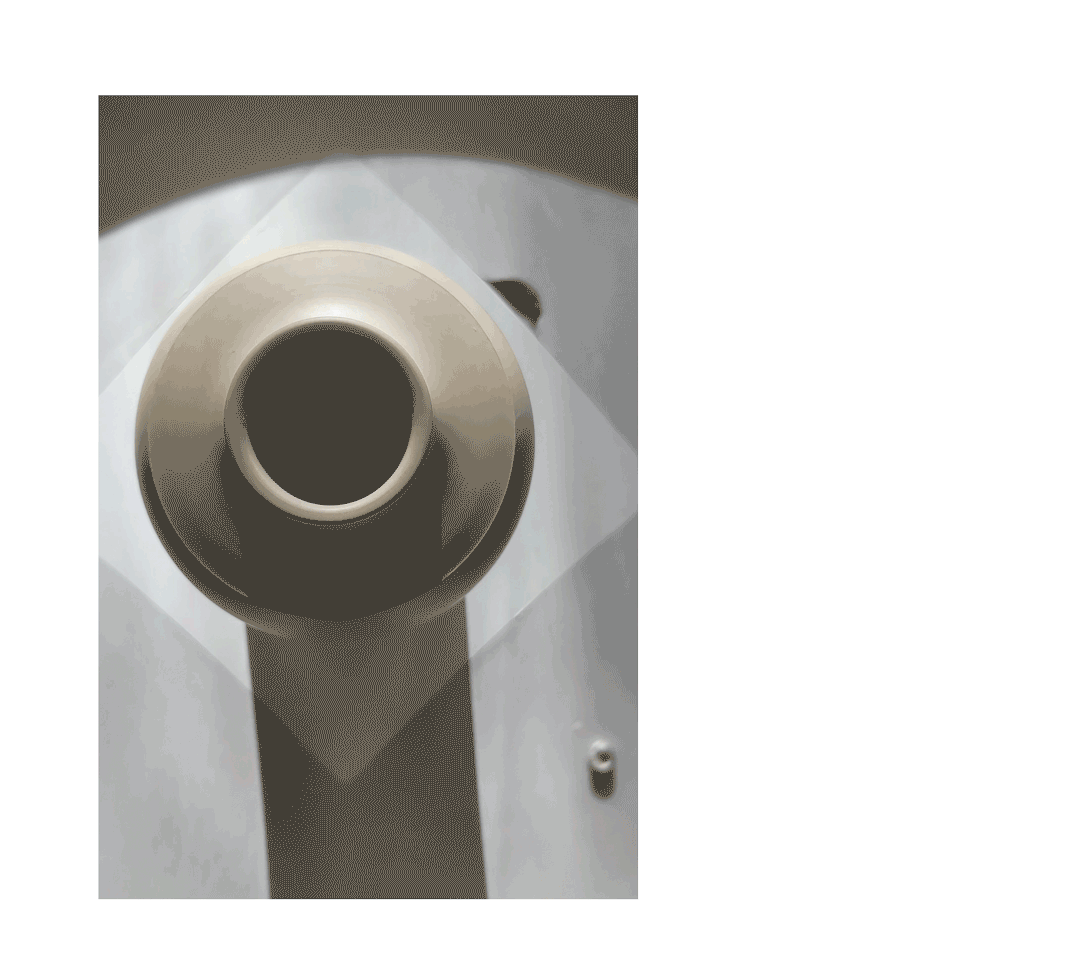Hello. So much for monthly, eh? Initially I missed my planned dispatch in February because the studios I’ve anticipated moving into for the past year - but hadn't come to pass - suddenly began coming to pass, and my energies were lurched in that direction: builders began tearing down walls and ceilings in prep for the rebuild, and I had to make some calls on how I would fit into it. Stasis into action, back to stasis… In the midst of these ups and downs I try to remember that such oscillations are like those of a sine wave: when zoomed-in they might feel like turbulence, when zoomed-out, they are a continuum. Rhythms that result in a tone.
One new skill I've recently learned helped me think about that. Since the last dispatch, I’ve been spending my Monday evenings at a small pottery class, as I’ve wanted to work with ceramics for years. Joining an evening class was to serve multiple purposes: to help with my need to establish a routine in this new place; to meet new people locally and begin to integrate in the community; and to learn a new skill that I know will be fulfilling generally, as well as potentially useful in my animation work.
Anyone who has learnt to throw pots will know that the first (and most important) step to master is that of centring: guiding the fast-rotating ball of clay into the precise centre of the wheel through vertical and horizontal pressure applied against the centrifugal force. Pushing the wall in makes the form reach up; pushing the top down makes the form spread out. And with each alternation of this squeezing and flattening movement, it’s as if the chaotic, shuddering, barely-controllable lump is calmed, and tamed, and metamorphoses into a new type of object: strangely still in its pliability; its unique symmetrical plasticity activated by the kinetic mechanics of the wheel, to allow a gentle manipulation by the hand - almost, in my mind at least, like drawing out the smooth note of a Theramin in space.
Very quickly I noticed that this felt like - and possibly was - animation. Obviously, there was the transformation, but the mechanism behind this transformation (while the wheel is in motion) is linked to animation in a fundamental way. The aim of centring is to eliminate unwanted movement, leaving that of the desired. Once centred, looking at it, feeling it, means for it to seem still, despite the speed of rotation. No latitudinal or longitudinal shifts, wobbles, vibrations... It’s the application of our hands, arms, feet, legs as technology in cohort with a machine to generate a dual state in an object: of stillness within movement, or vice-versa. It’s an optical illusion we’re looking for, for a magic trick of physics.
It strikes me that this is the precise same state a film projector is designed to achieve: to tame the film reel as it is flung wildly through the gate, to such a degree of perfection that we are unaware of this movement within the projected image, and the resulting stillness in the frame enables the impression of another kind of movement - what we call animation - that cannot otherwise occur. When throwing a pot, with the wheel in motion, and the clay appearing still even as it rotates at speed, each touch of the palm or finger animates the form into a new shape. This is the same infinite ‘plasmaticness’ that Eisenstein recognised as being at the heart of what we find attractive in cartoons.1
The lineage of the rotating form as a feature in animation of course goes back to its earliest incarnations in modern human history- phénakistiscopes, zoetropes* - through to the many recent versions, such as 3D-printed phyllotactic spirals, umbrellotropes, vinyl records and - inevitably - pots with stencilled glazes. (There are countless examples now - such rotating animations are enjoying a massive resurgence thanks to their popularity on social media.) This link between the earliest optical toys and the earliest artefacts of ancient human civilisation says something to me of the fundamental relationship the human imagination has to this combination of movement and form.
Making a pot is to slowly draw a line in space, and for that line, in turn, to be drawn out and extruded into a form through the movement of the wheel. The point of contact in the present is recorded and 'archived' in the surface, and especially when pulling up the form, the pot can be seen as a timeline of a gesture. This is much the same as how a film camera writes the flow of time to a string of images, but maybe in terms of the experience of making, a better analogy is in handmade film: where the gesture can be drawn through frames directly onto the acetate, sometimes even - e.g. in the case of the classic Evelyn Lambart & Norman McLaren short Begone Dull Care - while the film is moving through the gate. Other similarities present themselves, such as the rhythmic marks caused by scratching the film as it moves, being essentially the same distinctive marks as those created by the ‘chattering’ of a turning tool when finishing a pot. The regularity of the movement allows for patterns and the breaking of them, and our interaction with it reveals the shape of the rhythm.
The respective final forms may be completely different (except in the case of 3D printed sculptures like those of John Edmark’s, and the animated-glaze bowl), but the movement used to generate them have nevertheless determined them. In this case, with artworks that become central to our lives, the movement determines how we relate to the world, and how we move through it. These forms reflect our vitality, and also reveal things about it that we may easily forget were they not to exist.
Form is all we know … It’s the form that we respond to. But the form expresses vitality that there isn’t a form for; it has to be found in a form.
A family friend and artist Esmond Bingham once told me that when returning to materials, processes or subjects he had moved away from, it didn’t feel like going backwards, or a repeating circle - it resembled more a spiral staircase. Every time, his relationship to it had progressed somehow, so he may be over the same spot, but he’d also moved on from it. This conception of progression is how I see it not for just individuals, but in almost every aspect of life... As long as I do things, I will feel that there has been momentum even when the same things happen over and over again. I may continue to make the same ‘mistakes’, but each time I do it, I get better at responding to or working with it. This pattern can become part of our identity. The disruption and discontinuity of the past few years (for me, at least) have cast this fact in sharp relief: in order for me to feel centred, I must establish some form of routine not as a concrete structure, but as an application of a particular energy - allowing for plasticity and pliability - which naturally organises things into a form over time.**
Of all the pottery tutorials I’ve watched so far (and there have been a lot), this from ceramics tutor at Rochester Community and Technical College in NY, Robert Banker, landed best. Centring is not so much the start of the process, but “something you do over and over… Centring isn’t done until the pot comes off the wheel.”
Sincere thanks for subscribing to this, and for your patience. Til the next one,
Lewis
A couple of news bits:
Stolen Youth
I completed my first piece of work for TV last Autumn - five stop-motion shots for the 3-part Hulu documentary Stolen Youth: Inside the Cult at Sarah Lawrence, directed by Zachary Heinzerling - which is now streaming on Hulu and Disney+. It’s a deeply unsettling but incredibly enlightening and humane investigation into a personal cult that took over the lives of a group of college students. This New Yorker review perfectly sums up what makes it special. I’m deeply proud to have been brought on board for it, alongside animation friends Magda Kreps, Becky James and Mafer López. Let me know what you think if you watch it, and steel yourself: it’s heavy going but worth it.
Out of Hand - Fringe Arts Bath Festival, 27th May - 11th June
I’m participating in this exhibition in Bath alongside some truly excellent artist-animators at the end of May. Save the date; more details to come…
ITFS - Stuttgart International Festival of Animated Film
I’ll be at ITFS festival in Stuttgart at the end of April, representing director Irina Rubina and the team for her music video for Miles Davis’ What’s Love Got To Do With It, for which I animated Davis’ hand-drawn characters into psychedelic walk cycles. If you or anyone you know will be there, give me a shout!
*Apologies for the link to a TED Talk. This one is unusually tolerable and interesting.
**This newsletter is supposed to be part of that constant re-centring, and it’s why I felt anxiety at missing a couple of months right out the gate. Yet I’m happy with where this thought process has landed as a result… So maybe it’s okay..?
Ėjzenštejn, Sergej M., and Naum Ichilʹevič Klejman, On Disney, ed. by Jay Leyda, trans. by Alan Upchurch (London; New York; Calcutta: Seagull Books, 2017), p.32. Eisenstein was completely enthralled by Disney, whose bigotry and exploitation of workers in general has seen his reputation reassessed since. But the wider thoughts Eisenstein has on animation as an art form are still really interesting; not least because he was at the forefront of a school of thought that meaning in film was made in the edit, and trad. animation could be considered as granular in-camera editing at its most extreme.
Mike Dodd: Potter, dir. by Alex J. Wright (Goldmark Gallery, 2011) <http://youtube.com/watch?v=wKvjOeYWIn8> [accessed 19 April 2023]. Goldmark Gallery’s series on independent potters is wonderful. I recommend this one on Richard Batterham next: http://youtube.com/watch?v=Jox9gMLEQ5E?t=172. Thanks to carpenter, potter, milliner and alpaca farmer Mike Birch, who sold me my wheel, for these links.







